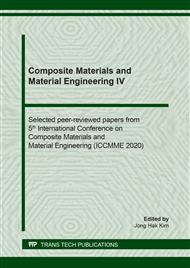p.22
p.28
p.34
p.40
p.46
p.55
p.61
p.69
p.75
Effect of Ply Drop in Aerospace Composite Structures
Abstract:
In most of the aerospace laminated composite structures, thickness variation is achieved by introducing the ply drops at the appropriate locations. Ply drop means the resin rich regions created due to abrupt ending of individual plies within the set of plies. This research is focused on understanding and quantifying the effect of these ply drop regions on the mechanical performance of the aerospace composite structures. This is achieved here by designing the appropriate coupons (with and without ply drops) and analyzing them using finite element analysis. Some typical designs of coupons were manufactured using aerospace grade carbon composite materials, and then tested under four-point bend, cantilever and short beam shear tests to check and validate the effect that was seen in the analysis. It is concluded here that allowable failure strains are different for with and without ply drop cases by a significant amount.
Info:
Periodical:
Pages:
46-51
Citation:
Online since:
June 2020
Authors:
Keywords:
Price:
Сopyright:
© 2020 Trans Tech Publications Ltd. All Rights Reserved
Share:
Citation:


